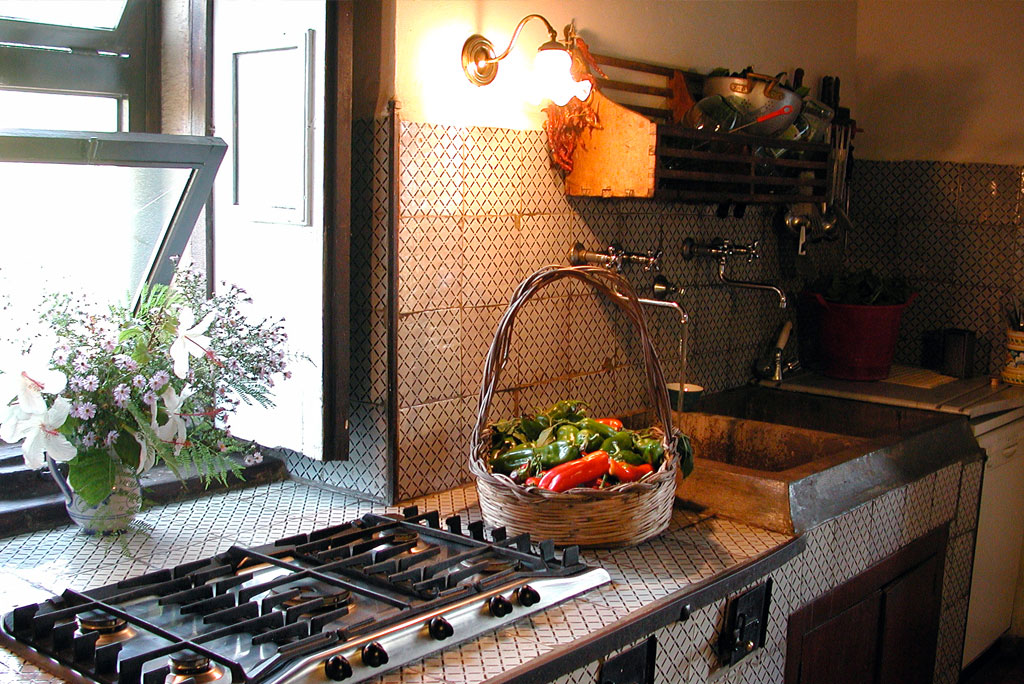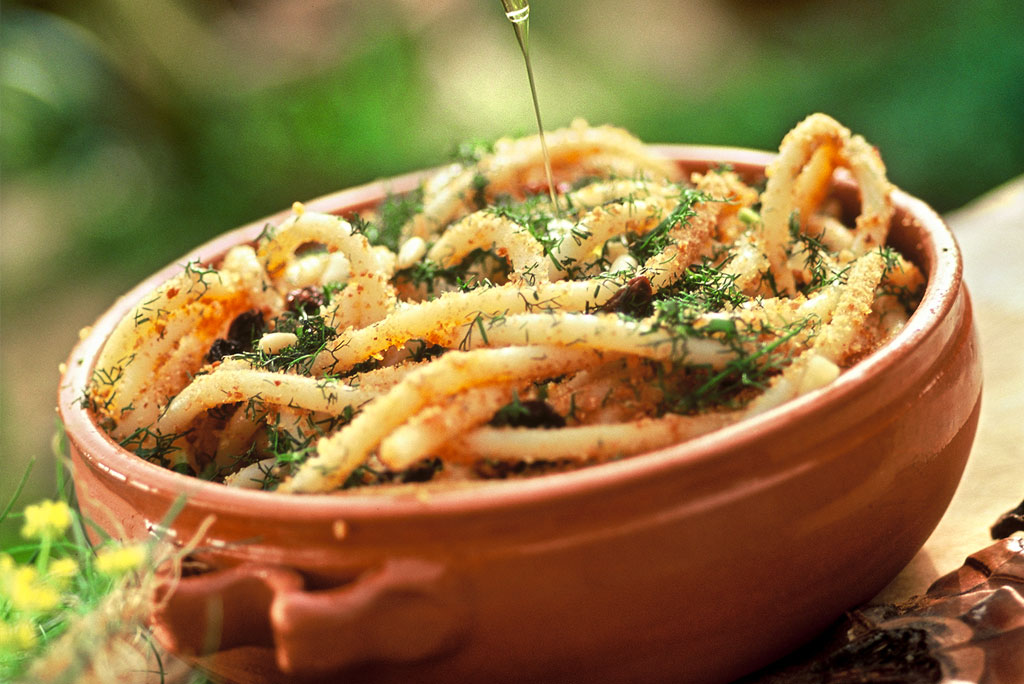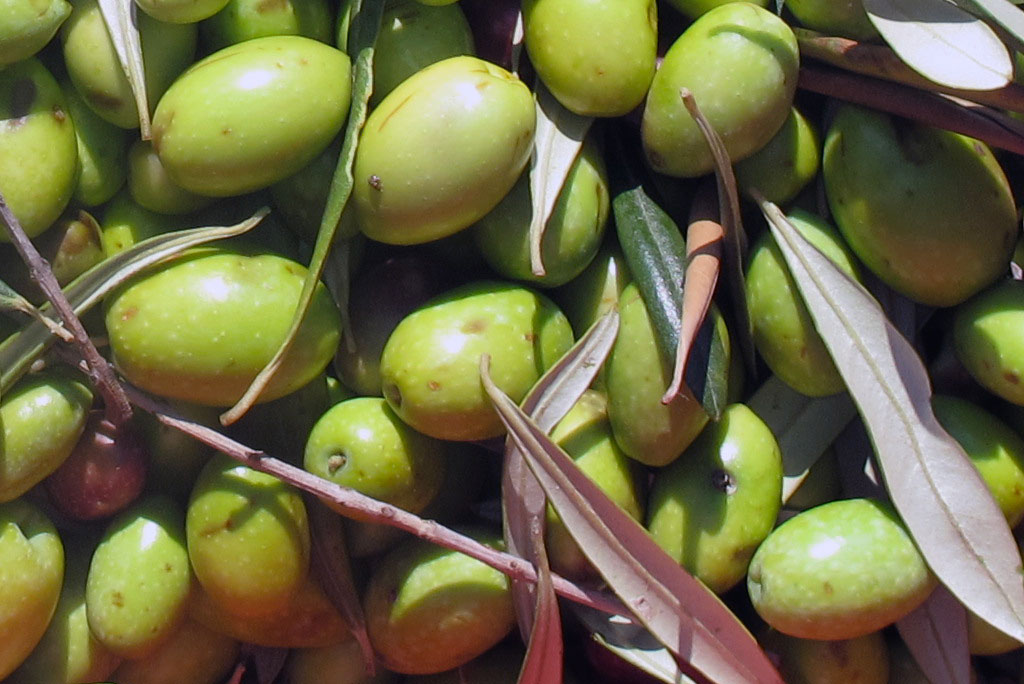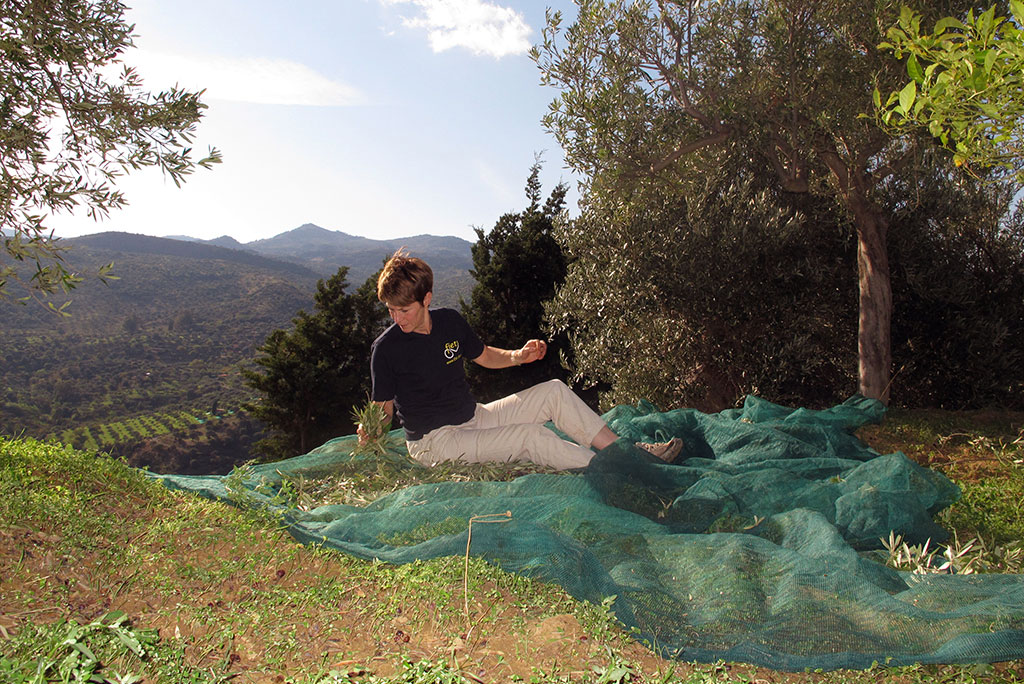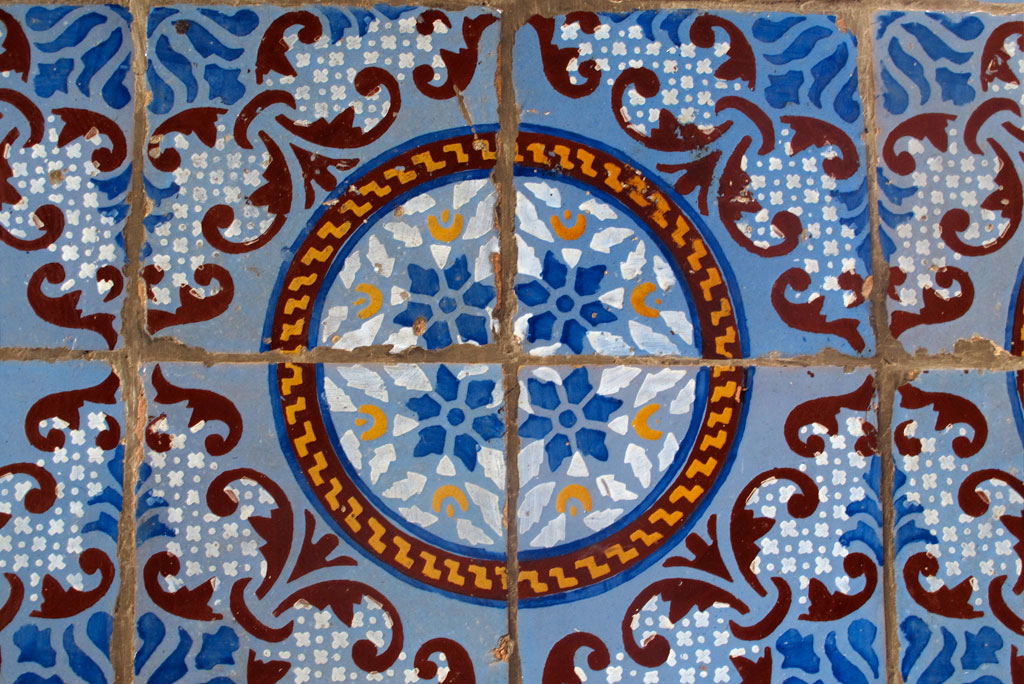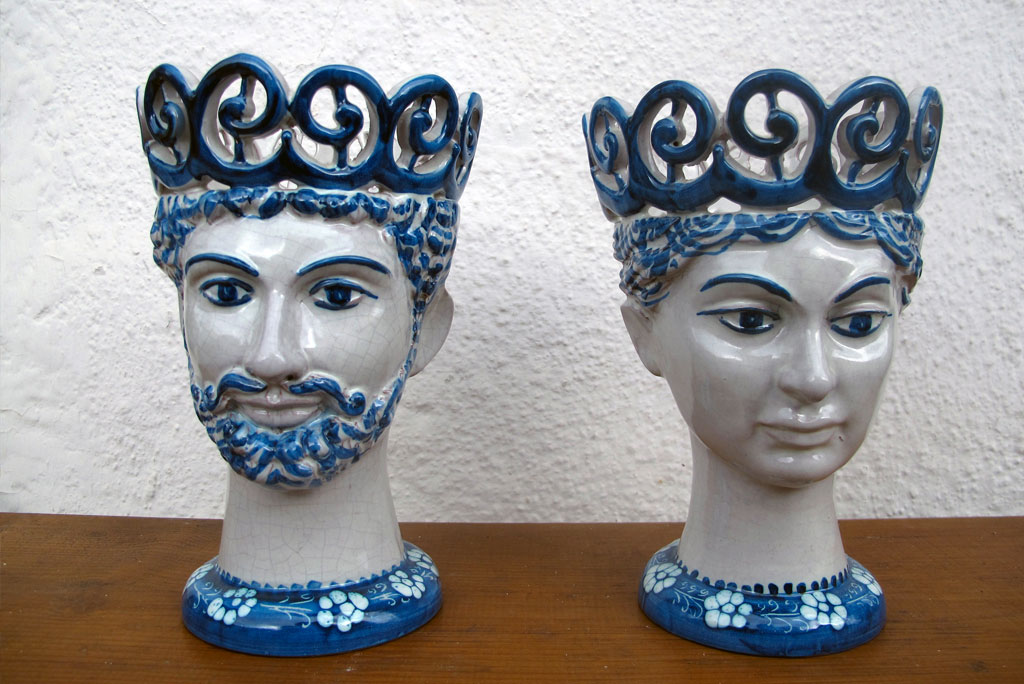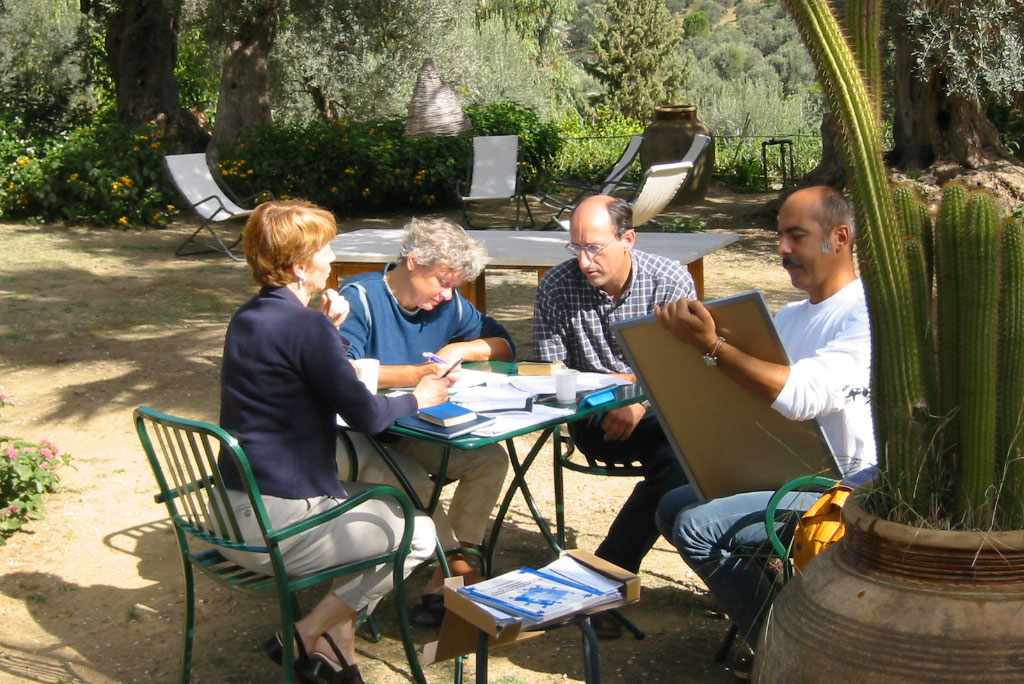several outdoor activities as trekking or mountain biking. These can be done, with a guide or not, in any of the four protected areas that surround the farm. Those who love the sea, in the nearby coast facilities, can practice windsurfing, kayak or scuba diving.
Cousine
At Casa Migliaca is offered a cuisine based on fresh local product mostly produced in the farm. Cuisine is lead, developed, and “interpreted” by Madam Teresa, owner and descendant of the family. Her cuisine has received international appraisal, most of all for the combination of flavourings and tastes obtained with the use of herbs and wild vegetables growing spontaneous in her property.
The origin of ingredients is controlled while recipes, all from memory of the popular sicilian cuisine, are constantly verified through consulting different authors. It’s possible, under request, to take part to food preparing and attend a cuisine course according to practical needs and requirements of the cuisine staff.
Agricolture
Casa Migliaca is an active farm, from its origins to the fifties a family oil mill, then until the seventies a transition time, then again a farm producing besides its historical product, the olive oil, citrus. The farm extension is about 12 hectares and has its own spring water source. One third of this area is covered with woods where live numerous wild animals such as foxes, porcupines, martens, two thirds are cultivated by the biodinamic method of Rudolph Steiner, developed by the Demeter Bund.
The main farm products for sale on the market are lemons and olive oil. In addition, a variety of fruit-bearing trees and several kitchen gardens sized for the farm-hotel consumption are cultivated. Plenty of fruits such as oranges (sweet and bitter), tangerines, pears, prickly pears, green figs, apricots, almonds, plums, are available for consumption by the house guests, or to be preserved as a variety of jams served at breakfasts. Among vegetables, tomatoes, peppers, zucchine, aubergines.
Leisure
Casa Migliaca offers many choices for recreational activities. You can actually enjoy physical activities within the bounds of the farm itself: over three kilometers of private trails allow you to practice various levels of footing and jogging. The course develops within the borders of the Migliaca property and includes rings going up and down, in places steep, for jogging and running, intermixed with proper gym training areas. A climbing training wall, a rope ladder and a professional stationary bike complete a mini exercise hall.
Those who prefer a leisurely stroll will find the itinerary along the southern flank of the Ciuppa stream particularly interesting: a total immersion into the “Macchia Mediterranea” (Mediterranean Bush), among elm trees, oaks and ash trees, deep into the most typical Sicilian wild Flora, or alternatively within the cultivated farmland, it may be interesting to scout around the century-old olive trees and carob trees and many other rare specimens of the Mediterranean garden.
During the olive harvest you can participate actively, each “adopting” his favorite tree, which would subsequently entitle you to an amount of olive oil proportional to the amount of olives you have picked. To work in the shade of a great, century-old olive tree is an experience that will take you back in space and time. Casa Migliaca is an ideal starting point for external activities: a tour guide service or just a map will be made available to those who enjoy the challenge of touring the countryside west of the Tusa river or the old mule trails towards Motta d’Affermo. or the Sambughetti reservation by the source of the Sambughetti river, or the many parks in the Nebrodi and Madonie mountains. You could also take the same tours by mountain bike. For those of you interested in water sports, windsurfing, canoeing and diving gear are available for rent at the nearby beaches of Cefalù, Pollina and Capo d’Orlando.
Culture
The Olive Harvest
You can take an active part in the olive harvest, usually in October in Sicily, by each “adopting” one or more olive trees, which would then entitle you to an amount of oil proportional to the amount of olives collected. Working in the shade of a great, century old olive tree is an experience that takes you way back in space and time. The drill here at casa Migliaca has remained the same through the centuries: one or more individuals using a pole or a modern picking tool, called “cutulaturi”, beat the olive branches causing the olives to fall onto a net laid on the ground; a group of “pickers” then collect the olives. This work is collective by nature, thus the whole family can participate, including children, grandparents, guests and friends, in a relaxed atmosphere where harmony becomes natural. In the old days this work had more rhythm to it and there was more awareness of its importance. Olive oil, today destined to consumption as food, was originally a source of energy comparable to modern petroleum products, as it was the essential ingredient for heating, cooking, for soaps, illumination etc.
Identification of Wild Herbs
This is an all around cultural activity that starts from the observation of the terrain, an inexhaustible source of food and therapeutic resources that the modern man, living in the confines of a city, no longer knows, or knows only marginally. A knowledge thereof limited only to the industrial production found in supermarkets, possibly vacuum packed. And yet a short cycle of walks in the country accompanied by an expert may suffice to discover limitless numbers of wild herbs found anywhere, all rich in therapeutic properties. As you progress, and based upon your needs, you will learn where to look for specific herbs as herbs “speak” to you and tell you where to find this or that vegetable, based on the location, and terrain composition: acid or alkaline, rich or poor of a given mineral, etc. For example, you can learn where to look for fennel or borage, where to find cabbage or mustard, buckwheat or chamomile.
The Lemon
Due to its location and for the last 200 years, Casa Migliaca has been one of the oldest lemon growing sites in Sicily. One of the most renowned lemon species, the ”Femminello Santa Teresa”, available all year around is grown at Casa Migliaca using biodynamic techniques and marketed under a protected trademark. It would be redundant to describe the universally known qualities of lemon as a food, however, its countless qualities can be used also in pharmaceuticals The juice of a fresh lemon accounts for about 30% of its weight and contains 6 to 8% citric acid, malic acid, calcium and potassium citrates, large amounts of B1, B2 and B3 vitamins, carotene, vitamin A, up to 50 mg vitamin C every 100 g of juice, mineral salts and metal components such as iron, phosphorus, manganese, copper.
In addition to its refreshing properties, lemon juice is a good disinfectant, which, in case of epidemics can be used systematically as a gargling media to disinfect the oral cavity, thus acting as a barrier against bacteria and viruses. However, its main property is to balance and regularize the metabolism and in particular the digestive functions. Contrary to common beliefs, use of lemon juice does not produce stomach acidity or irritation; its effect on the metabolic process is to transform the acids it contains into alkaline carbonates.
Lemon Based Therapies
Casa Migliaca is the ideal place for lemon based therapeutic and cosmetic treatments thanks to the availability all year around of fresh lemons biologically grown and always ripened to the correct point in order to be able to exploit to the fullest the lemon’s medicinal properties at the best point in time, e.g. when the lemon is just picked from the tree. Due to the lemon’s in depth effect at metabolic level, it is always advisable to consult your physician (or homeopath) before starting a cure based on lemon juice in order to match the dosage to the individual needs, Finally for it to be effective, the lemon juice should be taken at least a half hour away from meals.
Traditional Pottery
A guided tour through the countless small local handcraft companies will stimulate your interest to know more. From this it will be easy to join one of the many informal ceramics classes that any handcraft company offers at Santo Stefano di Camastra.
Memorable Flavors
On request you may participate in meal preparation, partaking in an actual cooking class, subject to the practical constraints of the house.
Italian language classes for foreigners
On request Italian language classes for foreigners are held at Casa Migliaca, usually in Autumn, by professional teachers in weekly or monthly cycles.
Sicilian language classes
Very informal classes, yet still challenging, aiming at teaching the typical Sicilian language as well as Sicilian gesturing
Musical and Literary Events
In Summer and Autumn folk and jazz music performances by Brigata Sinfonica (www.brigatasinfonica.com) as well as choir music by the Quintessenza Quintett (www.quintessenza.com). Reading of Sicilian texts with simultaneous translation into English or Italian.









